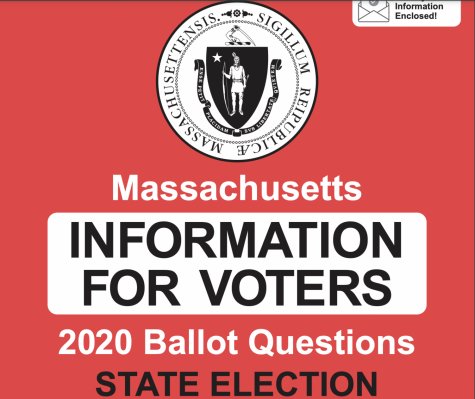Breaking Down the MA Ballot Questions and Results
MA Voters to Decide on “Right to Repair” and “Ranked-Choice Voting”
 In addition to electing federal and state officials, Massachusetts voters are tasked with two ballot questions, the “right to repair” and “ranked choice voting.”
In addition to electing federal and state officials, Massachusetts voters are tasked with two ballot questions, the “right to repair” and “ranked choice voting.”
Updates
—
As of 8:15 A.M. on Wednesday, November 4th, approximately 2.9 million people (86% reporting) have voted in Massachusetts, and here are the preliminary results :
Question #1: Right to Repair
Yes: 2,205,297 (75%)
No: 734,477 (25%)
Question #2: Ranked Choice Voting
Yes: 1,319,692 (45.3%)
No: 1,592,282 (54.7%)
—
As of 1:30P.M. on Saturday, November 7th, over 3.3 million people (99% reporting) have voted in Massachusetts, and here are the results :
Question #1: Right to Repair (Passed)
Yes: 2,520,824 (75%)
No: 844,566 (25%)
Question #2: Ranked Choice Voting (Rejected)
Yes: 1,506,949 (45.2%)
No: 1,823,790 (54.8%)
—
Confused about what these issues are and what they might mean? We have put together a list of questions and answers to keep you informed about the ballot questions.
FAQ:
Question #1. Motor Vehicle Mechanical Data (popularly known as “Right to Repair”)
What does the “right to repair” mean?
The “right to repair” legislation allows vehicle owners and repairers to access vehicle data.
So what does a YES vote mean exactly? What about a NO vote?
If the legislation is passed with a “yes” majority, vehicle manufacturers will be required to equip vehicles with tools to allow open access to vehicle data, starting in 2022. This will allow independent repair centers to access data wirelessly through the vehicle to inform repair decisions. A “no” vote will result in the status quo, which is described below.
What is the status quo? How are cars currently being repaired?
Currently, vehicle data can only be accessed by the original model manufacturers. That means if owners need repairs that require accessing this data, they must go to the original manufacturers for repair.
Question #2. Ranked-Choice Voting
What does ranked-choice voting mean?
A “ranked-choice” voting system allows voters to rank candidates in order of preference.
So what does a YES vote mean exactly? What about a NO vote?
If the legislation is passed with a “yes” majority, voters will have the option to order candidates on the ballot based on personal preference. If a voter’s first-ranked candidate is eliminated, their vote is transferred to the next-highest candidate on their list. This is intended to ensure against wins that do not reflect the majority vote. A “no” vote will maintain the status quo.
What is the status quo? How do elections usually work?
Currently, voters only have the option to pick one candidate on their ballots. This allows politicians to win despite not having a majority vote, since votes for eliminated candidates are not “reused” as they would be in ranked-choice voting.







